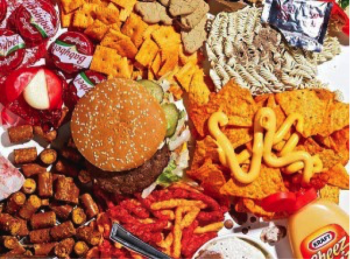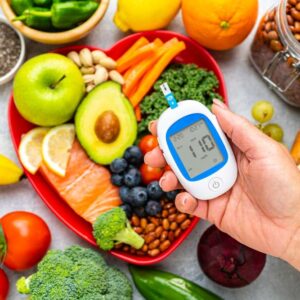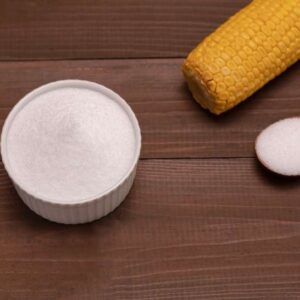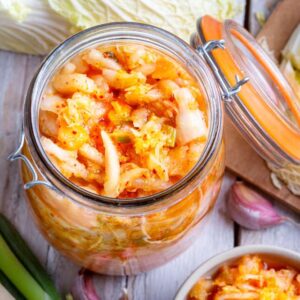
Ultra-Processed: The Sweet, Sad Truth About The American Diet
- Clean these foods out of your pantry!
- Sugar, sugar everywhere, but not a nutrient in sight
- The American diet: overfed and undernourished.
Dear Reader,
What did you have for breakfast?
There’s a good chance you may have taken a bite out of a once-frozen waffle or spooned down some cereal as you got your morning started — well, if you ate your breakfast in America, that is.
In fact, it’s more like a great chance.
New evidence taken from America’s largest health survey, the National Health and Nutrition Examination Survey (NHANES), finds that Americans are getting a staggering amount of their calories from ultra-processed food sources.
But the bad news just keeps coming from this study.
As it turns out, all of this ultra-processed food is responsible for almost the entire amount of the additional sugar that clogs up the American dietscape. And it’s making our country unhealthy.
Today, we will provide you some examples of what these foods are and what they can do to your body.
First, let’s break down the study.
![]() Ultra-gross
Ultra-gross
The study, from the University of São Paulo and Tufts University, was published in BMJ Open last week.
Data taken from the NHANES let researches examine the dietary habits of over 9,000 people.
After analyzing this information, they discovered 58 percent of the participants’ diets consisted of ultra-processed foods.
In addition, they found that 30 percent of the participants’ calories were coming from minimally processed foods. Processed but not ultra-processed foods made up 9.4 percent. Lastly, 3 percent consisted of “processed culinary ingredients,” like salt, oils, and sugar.
“Processed” foods are different from “ultra-processed foods.”
Let’s break it down…
Per the FDA, a food is “fresh” when it’s been recently harvested. However, I should mention, the FDA also allows foods that have been drenched in pesticides and coated in preservatives to be called “fresh.”
Minimually processed foods are things like frozen vegetables, pastas, eggs, and some meats.
Processed foods include items such as canned foods, cheese, breads, and even wine.
However, for the purposes of this study, the researchers were concerned with foods that are ultra-processed.
They define them as:
Formulations of several ingredients which, besides salt, sugar, oils, and fats, include food substances not used in culinary preparations, in particular, flavors, colors, sweeteners, emulsifiers, and other additives used to imitate sensorial qualities of unprocessed or minimally processed foods and their culinary preparations or to disguise undesirable qualities of the final product.1
Yum.
They also include examples: “Ultra-processed foods include mass-produced soft drinks; sweet or savory packaged snacks; confectionery and desserts; packaged baked goods; chicken/fish nuggets and other reconstituted meat products; instant noodles and soups.” 1

The building blocks of many Americans.
Photo credit: middleagemusclegain.com
But it’s these ultra-processed foods that are accounting for just about all of massive amounts of sugars we are eating — 90 percent, to be exact.
![]() Sickeningly Sweet
Sickeningly Sweet
The study found that one of every five calories in the average ultra-processed food product is due to sugar.
The 2015–2020 U.S. Dietary Guidelines and the World Health Organization both recommend that added sugars make up 10 percent or less of your daily caloric intake.
Only people who ate within the lowest 20 percent of the ultra-processed food range were in the 10 percent range for their average daily added sugar intake.
The 80 percent of those who ate the most ultra-processed foods blew right past the 10 percent limit.
As you may already know, added sugars can cause many health issues, including diabetes, obesity, tooth decay, risk of heart disease, and cancer.2
They suggest one of the main issues with the American diet is that sugar-laden, ultra-processed foods are replacing “more-nutrient-dense foods.” Because of this, Americans are “simultaneously overfed and undernourished.” 2
In conclusion of the study, the researchers suggest the obvious: The best way for you to cut out this added sugar is to reduce your intake of ultra-processed foods.
If you have any special ways to avoid processed foods you would like to share, please do!
Nmoore@lfb.org
Live well,

Natalie Moore
Managing editor, Living Well Daily
Sources
[1] ‘Ultra-processed’ foods make up more than half of all calories in US diet
Written By Natalie Moore
Natalie Moore is a dedicated health researcher with a passion for finding healthy, natural, and science-based solutions. After a decade of direct healthcare experience in western and natural medicine, she was involved in public health research before joining Living Well Daily.
View More Free Articles
Stop Obsessing Over Diet Trends
Can we stop with the endless diet debates already? Every other week there’s a new headline shouting about which diet is best for weight loss, heart health, or diabetes. Paleo, keto, low-carb, high-protein… it’s exhausting. And now, a new meta-analysis is out comparing the Mediterranean diet, the DASH diet, and something called AHEI (that’s “Alternative...
A New Reason to Ditch Processed Junk
If you’ve ever walked the inside aisles of your local grocery store and thought, “This is all just junk,” your instincts were spot on. A new study published in the journal Thorax just added another red flag to the list of dangers linked to ultra-processed food—a 41 percent higher risk of lung cancer. That’s right....
When Being Winded on Stairs Is Serious (And When It Isn’t)
I had an athlete visit me recently because he experienced shortness of breath while climbing stairs. He is in great shape, so he was worried about what it might mean. “Doc,” he said, “I run five miles three times a week. Why am I huffing and puffing after two flights of stairs?” His concern is...
Study EXPOSES Hidden Danger Lurking in Your Car
We think of our homes and cars as safe havens. But according to a startling new study, they may be flooding your lungs with microscopic plastic particles—every single day. Researchers in France recently found that adults inhale an average of 68,000 microplastic particles daily from indoor air alone. To put that in perspective, that’s about...
Mailbag: Is Modern Food Making You Snore?
“What can cause snoring, and is there a way to correct this issue?” —Seeking Silence Hi Seeking, Snoring happens when the soft tissues in your throat relax and vibrate as air passes through during sleep. While several factors can cause snoring—from sleep position to nasal congestion—I want to share one trigger that might surprise you....
Simple Food Swap SLASHES Dementia Risk 28%
Let’s be honest… who would jump at the chance to cut their dementia risk by 28 percent. And no, you don’t need to run marathons, survive on broccoli, or learn to play the zither (whatever that is) to make it happen. All it takes is one easy swap—something that’s probably already in your refrigerator. Researchers...
This SMART Floss Exposes Hidden Health Danger
Scientists have created dental floss that doesn’t just clean between your teeth—it also tracks your stress while you’re flossing. Now, I know what you’re thinking… “Great—now even flossing is going to stress me out by telling me how stressed I am.” But this fascinating new tool from Tufts University could be a game-changer for understanding...
Is This "Safe" Sweetener Damaging Your Brain?
The headlines are alarming… “Popular Sugar Substitute Linked to Brain Cell Damage” and “Erythritol Could Damage Critical Brain Barrier” are just two of the dozens I’ve spotted recently. But before you toss every sugar-free product in your pantry, let’s take a closer look at what this study actually shows—and what it doesn’t. The latest research...
This Summer Threat Could SPIKE Your Blood Sugar
Picture this… It’s another scorching hot summer day. You crank up the air conditioning while watching the weather forecast, which predicts yet another “record-breaking” heat wave. It’s starting to feel like just another miserably uncomfortable summer. But what you might not realize is that—if you have diabetes—those rising temps could do far more damage to...
Move Over Yogurt—5 Foods That Pack MORE Probiotics
Let’s talk about your gut. The microbiome is the collection of trillions of bacteria and other tiny organisms that live in and on your body—especially in your gut—and help keep you healthy. I’ve written often about how vital it is to maintain a healthy microbiome. And you might have dutifully added yogurt to your shopping...









